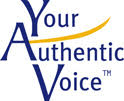 At a recent networking meeting, I watched as a speaker presented a program on her new company. The audience of 50 or so people responded with warm attention. At the end of her program she invited questions, which went well, until the end. A young woman, let’s call her Ally, raised her hand. In a serious tone, she said something like, “You speak about diversity, but your slides don’t show it. I don’t see myself in them at all.” To which the speaker responded by apologizing and telling her it’s a new company and they had borrowed some slides from their previous parent company. They hadn’t had the time to change them out when they were asked to speak. Mea culpa.
At a recent networking meeting, I watched as a speaker presented a program on her new company. The audience of 50 or so people responded with warm attention. At the end of her program she invited questions, which went well, until the end. A young woman, let’s call her Ally, raised her hand. In a serious tone, she said something like, “You speak about diversity, but your slides don’t show it. I don’t see myself in them at all.” To which the speaker responded by apologizing and telling her it’s a new company and they had borrowed some slides from their previous parent company. They hadn’t had the time to change them out when they were asked to speak. Mea culpa.
And, there you go. Ally had a good point, and who knows why she felt it necessary to point this out during the speech. It didn’t really contribute to the conversation. She could easily have approached the speaker after the presentation and offered her observation. I’m guessing the speaker felt a bit embarrassed, and I know at least some of the audience members felt uncomfortable. This is how the speech ended.
You may think Ally has the right to express her opinion, and of course, she does (although I think we all have to consider whether we’re adding to the conversation or taking away from it with our comments or questions). It’s a free country. When you put yourself in front of an audience, you invite comments whether you ask for them or not. Most people are gracious and grateful for the information. But, now and again, you get the critic.
So, the question is, what do you do about that when it happens?
I think the speaker handled this pretty well. Here are some other options to create a meaningful connection for everyone in the audience:
1. Reframe the question or statement. When addressing a critical comment, instead of responding with a reason and apology, reframe it. The speaker could have said something like, “Thank you so much for your comment. This shows me you really care that your community is represented. Can you tell me more about that? What has been your experience? How would you like to be represented?” The speaker could have given the critic what she wanted – an audience – and redirected the conversation to serve the entire audience.
2. Find the humor in the situation, if appropriate. The speaker might have addressed the comment with, “This is one of those times I’d like to slip out unnoticed . . . (smiling). Does anyone have an invisibility cloak?!” This diffuses the discomfort and everyone can have a laugh.
3. Assume good intentions and respond accordingly. Thank the critic, admit to the oversight in a self-deprecating way and promise to do better in the future, with something like, “Gosh, what an oversight! Thank you for pointing it out. We’ll take care of this right away.” Ah, that feels good. We’re all human. Understanding and compassion abound!
While you can never know when this might happen, you can know it’s a possibility. By choosing one of the above techniques and practicing it beforehand, you’ll be in a much better position to handle a critical comment or question and soothe the ire of your savage beast.
Most importantly, do not end your presentation on that note. Always follow your Q&A with your “close” so you can leave your audience with the takeaway you desire.
This happens to all of us who choose to share our expertise, experience and inspiration, both on and off the platform. I’ve overreacted when confronted with criticism when I was overly tired or irritated about something. So, take care of yourself so you can take care of your audience!
I would love to support you. I can be reached at Andrea@AndreaBeaulieu.com

Leave A Comment